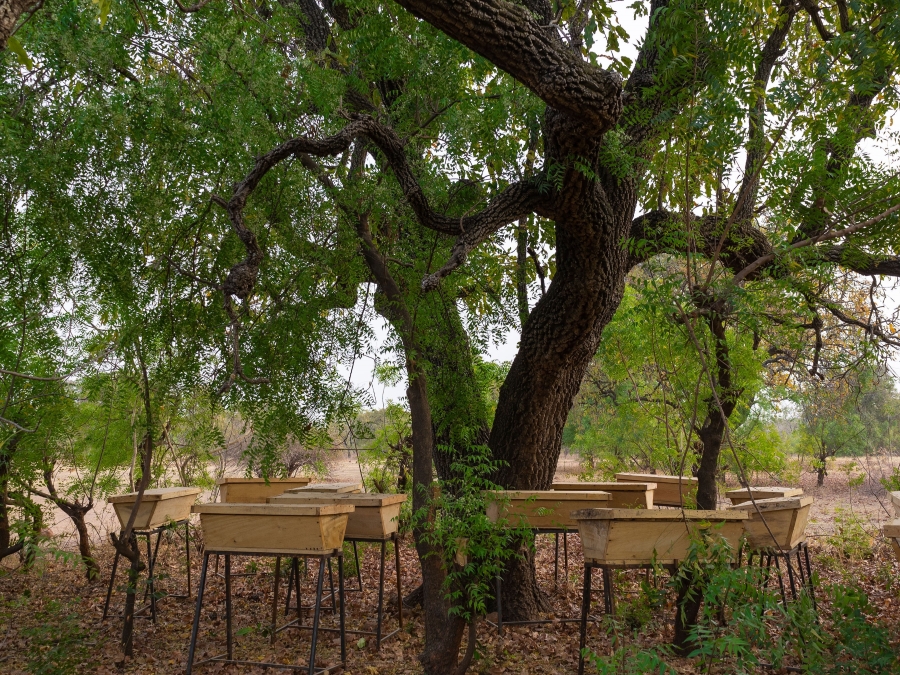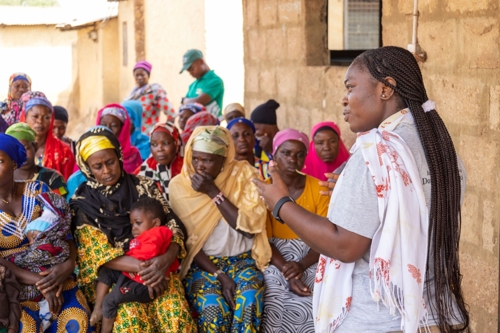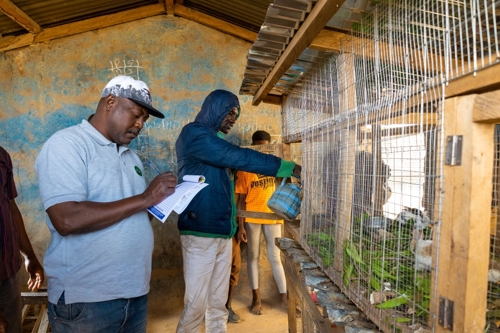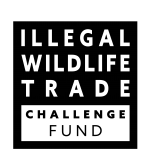Improving livelihoods in the Mole Ecological Landscape

Beehives supplied to beneficiaries as additional livelihood intervention. Credit - Obed Yaoseh, Nature & Development Foundation (NDF).
Living with wildlife: Improving livelihoods in the Mole Ecological Landscape
The project came about because of high levels of poaching of buffalos, hartebeest, elephants, and carnivores for bushmeat and body parts trading. This is a result of inadequate participatory management of the Mole National Park with park fringing communities, inadequate nature-based livelihood opportunities, and low law enforcement in the north and north-western parts of the park, where the Moagduri-Wuntanluri-Kuwumsaasi (MWK) and Chakali Sungmaalu Community Resource Management Areas (CREMAs) are located.
The project is being implemented by a consortium led by the Nature and Development Foundation with Mole National Park and CK-Tedam University as partners.
The aim of the project is to empower park-fringing communities for increased community benefit and participatory wildlife management. Implementers of the project envisage achieving this goal through provision of nature-based livelihoods, agroforestry systems, and strengthening of the two CREMAs.

Project Coordinator addressing Women beneficiaries. Credit - Obed Yaoseh, Nature & Development Foundation (NDF).
Stories from the Mole Ecological Landscape
1. Shea nut pickers get assistance
Women shea nut collectors of the Gbantala, Kpalwogu, Katua, Wuntori, Gurumbelle, Chagu, Tantala, and Yizesi communities have received training on safe collection of shea nuts using shea nut rollers. According to the women, the traditional method of collecting shea nuts with bare hands is characterised by snake bites, scorpion bites, injuries from other sharp objects or sticks, and a lot time bending and/or squatting, which usually results in waist pains and other health challenges.
The project aims to train 400 women on the safe and efficient collection of shea nuts using the shea nut rollers. These women will be from 10 communities within the Chakali Sungmaaluu and MWK CREMAs.
Facilitated by Mr. Midas Bambilla, a community engagement specialist and Operations Lead at Agri-Savannah Ltd., the women were trained on effective shea nut storage techniques to preserve the quality of the nuts and thus enhance yields during processing. The women were encouraged to keep their nuts away from direct sunlight to preserve moisture content, and away from rain, water, or moisture to avoid moulds and other fungi growths or decay to the nuts.
The project Coordinator, Ms. Margaret Appiah of Nature & Development Foundation, informed the women that the training had come to them because of their proximity to the Mole National Park, and also because the communities are part of the CREMAs. Ms Appiah shared the importance of biodiversity conservation, urging the women to contribute their quota by discouraging their sons, husbands, and other relations from hunting in the Mole National Park; and to themselves desist from trading wildlife as bushmeat. She also urged the women to prioritise the education of their children through schools. Appiah explained that poaching and trading in buffalos, hartebeest, elephants and carnivores should cease and not be encouraged as these animals are endangered, meaning the remaining numbers must be conserved to enhance viability within the species. She encouraged the women to be keen on the collection of shea nuts, and to view the practice as a viable and sustainable business.
At the end of the training, each of the women was given a complete set of the shea roller equipment and other safety items, as well as a basin to support their shea nut-picking venture. The women were also promised linkages to good markets for the profitable sale of the collected nuts. The women were appreciative of the assistance given them saying that the rollers would not only relieve them of the pain of long hours of bending, animal bites, and associated injuries but would enable them to pick more quality shea nuts within relatively shorter times. They said this would enable them to make more money, as the higher the quantities and qualities of your nuts, the better your value and price.

Beneficiaries of safe shea collection at Chagu. Credit - Obed Yaoseh, Nature & Development Foundation (NDF).
2. Rural communities empowered for sustainable wildlife conservation
The Communities of Kendia, Jeriyi, Chasie, and Ducie, in the Wa East District of the Upper West Region, and the communities of Tandow, Yizebisi, Tantala and Zukpeni in the Mamprugu Moagduri District in the Northeast Region of Ghana, have received training on beekeeping, grasscutter and rabbit farming as additional livelihood options. The communities are part of the Chakali Sungmaaluu and MWK CREMAs.
The training session was facilitated by Mr. Ebenezer L. Koranteng Manager of the Storey Accres Farms and Consult, who walked participants through an insightful practical demonstration on how to rear grasscutters and rabbits, knowledge of their sexes, proper handling, feeding, gestation period, weaning of the young ones, as well as diagnosis and treatment of diseases.
The training on beekeeping was facilitated by Mr. Jacob Y. Abukari, a Beekeeping Technician in charge of the Centre for Youth and Rural Self Project, who made a practical presentation on the relevance of honey and how to produce it, types of bees and their functions, maintenance of bee hives, and methods of getting the beehives colonised.
In addition, the training also included practical demonstrations on the use of protective clothes; bee colonisation and maturity periods for harvesting; and bush fires and its socio-economic ramifications. Some carpenters in the Tantala and Bulenga communities also taught participants about the construction and maintenance of beehives and grasscutters and rabbit cage repairs.
At the end of the training workshop, the project coordinator presented complete sets of beehives, grasscutters, rabbits, rodent cages, and protective clothing to 80 beneficiaries, as well as essential accessories that enable them to engage in the additional livelihood interventions to enhance income generation.

3. Beneficiaries pledge to protect wildlife
In a heartwarming video interview, Alhassan and Bawa, the two beneficiaries of a sustainable livelihood intervention of the project, “Living with Wildlife: Improving Livelihoods in the Mole Ecological Landscape”, have pledged to abandon hunting practices within the Mole National Park. Their stories serve as a powerful testament to the project's success in uplifting communities from poverty to conserving wildlife.
Alhassan and Bawa's experiences showcase the positive impact of the project. With their increased household income they have found meaningful alternatives to hunting, allowing them to contribute to the conservation of the park's rich biodiversity. Their story serves as an inspiration for others, highlighting the potential for communities and wildlife to thrive together.
Written by Obed Yaoseh and Margaret Appiah from the Nature and Development Foundation and the Communication Team-C.K.Tedam University of Technology and Applied Science. For more information on this IWT Challenge Fund Main project IWT121, led by Nature and Development Foundation, please click here.

 Back
Back